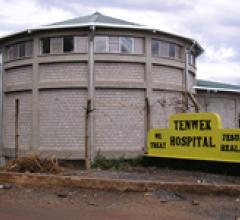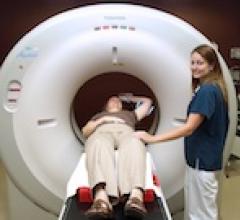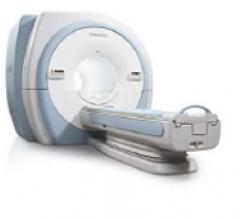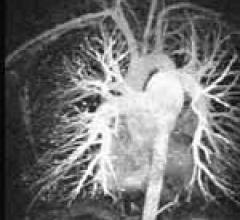If you enjoy this content, please share it with a colleague
Canon Medical Systems USA
With headquarters in Tustin, Calif., Canon Medical Systems USA Inc. markets, sells, distributes and services radiology and cardiovascular systems, and coordinates clinical diagnostic imaging research for all modalities in the United States. Canon Medical Systems Corporation, an independent group company of Canon Inc., is a global leading provider of diagnostic imaging systems including CT, MRI, Ultrasound, X-ray systems and clinical laboratory systems. In business for more than 100 years, Canon Medical Systems Corporation (formerly Toshiba Medical Systems Corp.) was built to improve the quality of life for all people. It delivered on this mission with medical innovations that are “Made for Life”—made to improve the lives of patients, clinicians and administrators. Its legacy was built with pioneering medical technology, such as the world's first X-ray machines in 1932 and Japan's first magnetic resonance imaging (MRI) systems in 1983. Canon Inc. entered the healthcare business in 1940 with the development of Japan’s first indirect X-ray camera which was used for the early detection of pulmonary tuberculosis. The partnership of Toshiba Medical Systems Corporation and Canon (now Canon Medical Systems Corp.) brings together two cutting-edge technology businesses, founded with similar values of creativity, flexibility and patient-friendly healthcare solutions. Today, their combined history of research and innovation drive forward Canon Medical Systems’ vision for building a world-class healthcare enterprise. For more information: https://us.medical.canon/
Canon Medical Systems’ offering includes: computed tomography, magnetic resonance, ultrasound, X-ray, cath and EP lab
Videos
-
August 31, 2021
Several radiology IT vendors at 2021 Healthcare Information Management Systems Society (HIMSS) conference demonstrated computed tomography (CT) imaging advanced visualization software software to help automatically identify and quantify COVID-19 pneumonia in the lungs. These tools can help speed assessment of the lung involvement and serial tracking can be used to assess the patient's progress in the hospital and during long-COVID observation.
Examples of COVID analysis tool shown in this video include clips from booth tours at:
• Fujifilm
• Siemens Healthineers
• Canon (Vital)Canon received FDA clearance for its tool under and emergency use authorization (EUA).
Siemens said its tool was part of its lung analysis originally developed for cancer but modified and prioritized to aid in COVID assessments.
HIMSS Related Content:
Advances in CVIS and Enterprise iImaging at HIMSS 21
Photo Gallery of New Technologies at HIMSS 2021
VIDEO: Importance of Body Part Labeling in Enterprise Imaging — Interview with Alex Towbin, M.D.
VIDEO: Coordinating Followup for Radiology Incidental Findings — Interview with David Danhauer, M.D.
VIDEO: Cardiology AI Aggregates Patient Data and Enables Interactive Risk Assessments
VIDEO: Example of Epsilon Strain Imaging Deep Integration With Siemens CVIS
January 26, 2021This is an example of a COVID-19 (SARS-CoV-2) positive patient's lung computed tomography (CT) scan. The video scrolls through the image slices of the scan and shows the typical white, ground glass opacities (GGO) caused by COVID pneumonia. The pneumonia typically appears along the walls of each lobe of the lung, especially the chest wall and the lower portions of the lungs. This scan is from a Canon Aquilion Prime SP CT scanner and used Advanced intelligent Clear-IQ Engine (AiCE), an artificial intelligence-driven image reconstruction software to improve image quality of lower-dose scans. This was shown by Canon Medical as an exmaple of CT image quality for the virus at the 2020 Radiological Society of North American (RSNA) meeting.
Read more about this system and its launch in 2020 to address COVID, Canon Medical Launches CT Solution for Patients with Viral Infectious Diseases.
VIDEO: How to Image COVID-19 and Radiological Presentations of the Virus interview with Margarita Revzin, M.D., associate professor of radiology and biomedical imaging, Yale School of Medicine.
Find more radiology clinical images of coronavirus in this photo gallery.
February 08, 2019This is an example of an arterial venous malformation (AVM) in the brain imaged on a Canon Alphenix Alpha angiography system. It shjows a contrast injection highlighting the vessels, which have been color coded to show the position of the veins and arteries involved in this vascular defect.
July 21, 2017DAIC and ITN Editor Dave Fornell discusses some of the most innovative new computed tomography (CT) technology and trends at the Society of Cardiovascular Computed Tomography (SCCT) 2017 meeting. Read the article "Advances in Cardiac CT Technology" and watch VIDEO: Advances in Cardiac CT Imaging.
October 05, 2016Contributing Editor Greg Freiherr offers an overview of digital radiography (DR) advances at the Association for Medical Imaging Management (AHRA) 2016 meeting. Read the article “The Coming Push for DR.” Watch a technology report sidebar video on new DR Systems technology.
December 14, 2015Video discussion of new technology and trend highlights at the Radiological Society of North America (RSNA) 2015 meeting with ITN editor Dave Fornell and ITN contributing editor Greg Freiherr.
December 11, 2015ITN/DAIC Editor Dave Fornell shows his choices for some of the most innovative new imaging technologies on the expo floor at Radiological Society of North America (RSNA) 2015 meeting.
December 11, 2015Interview with Jon Brubaker, MBA, RCVT, ultrasound technology analyst, MD Buyline, explains the trends and new technology he saw at the Radiological Society of North America (RSNA) 2015 meeting.
July 18, 2014The Aplio 500 CV is the system of choice for all premium 2-D cardiac exams. Featuring Toshiba's 2-D Wall Motion Tracking technology, the system provides stunning visualization and quantitative analysis of myocardial wall motion with unrivaled accuracy and reproducibility. With on-board cardiac quantification measurements in all directions (radial, circumferential, 2D rotation and longitudinal), the Aplio500 CV system is designed to get the most comprehensive information anytime and anywhere in the hospital, right at the patient's bedside. Additional cardiac-specific technologies include Tissue Enhancement, Advanced Dynamic Flow, Lateral Gain Controls, Tissue Doppler, Stress Echo, Flex-M Mode and Auto IMT. The system is easy to use, with superior ergonomics and a smaller footprint, making it easier to maneuver for greater patient access and improved workflow. For more information: http://medical.toshiba.com/products/ul/cardiovascular/index.php
July 03, 2014DAIC Editor Dave Fornell highlights his choices for some of the most innovative new technology at the American Society of Echocardiography (ASE) 2014 meeting.
June 20, 2014DAIC Editor Dave Fornell shares his choices for the most innovative new technologies in nuclear imaging that were on display at the 2014 Society of Nuclear Medicine and Molecular Imaging (SNMMI) annual meeting.
July 15, 2013DAIC Editor Dave Fornell highlights some of the biggest trends and most innovative technology discussed during the American Society of Echocardiology (ASE) 2013 annual meeting.
RELATED CONTENT
NewsSeptember 16, 2011 – Toshiba America Medical Systems Inc. has donated and installed a refurbished Aquilion 4 Computed Tomography (CT) system at Tenwek Hospital in Bomet, Kenya. The donation is part of the company’s effort to provide remote countries better access to medical imaging technology.
TechnologySeptember 12, 2011 – Designed to improve productivity and efficiency in X-ray imaging, Toshiba America Medical Systems has introduced the Kalare Wireless X-ray system. The Kalare Wireless includes the advanced technology from the original Kalare, plus a new wireless 14-inch by 17-inch panel with a rotating bucky tray designed for optimal detector movement.
Feature | Helen KuhlAmerica’s growing girth is a challenge for radiation technologists tasked with positioning patients in imaging systems designed for smaller-sized individuals. Systems manufacturers have worked to develop units to accommodate larger patients, creating couchtops that hold more weight and overcoming technological obstacles to make bores wider and still obtain a high-quality image, both in computed tomography (CT) and magnetic resonance (MR) units.
TechnologyAugust 30, 2011 – Toshiba America Medical Systems Inc. announced the U.S. Food and Drug Administration (FDA) clearance of the HDR-08A Imaging System for Kalare, the company’s radiographic fluoroscopy (RF) technology.
NewsAugust 19, 2011 – Addressing the need to improve diagnostic accuracy while making exams safer and more comfortable for patients, Toshiba America Medical Systems Inc. is showcasing patient-focused technology, including its Aquilion ONE and Aquilion Premium computed tomography (CT) systems, M-Power magnetic resonance (MR) system user interface (work in progress), Aplio MX ultrasound system and Kalare Wireless, at the Association for American Medical Systems Management (AHRA) annual meeting in Grapevine, Texas, August 14–17.
TechnologyAugust 10, 2011 – In the 3.0 Tesla (T) magnetic resonance (MR) marketplace, patient compliance often impacts image quality and patient throughput. As the only 3.0T MR system designed to improve patient compliance and comfort while offering advanced radiology capabilities, Toshiba America Medical Systems Inc.’s new Vantage Titan 3.0T open-bore MR has received U.S. Food and Drug Administration (FDA) clearance. The new system is the only 3.0T MR offering patient-friendly features such as noise reduction, a wide and open bore, feet-first imaging and Toshiba’s proprietary contrast-free techniques.
NewsJuly 15, 2011 — In a true hybrid suite, both cath lab and open surgical procedures are performed in a single room. In creating hybrid cath labs, healthcare facilities require imaging technologies that provide the flexibility to quickly and easily access both the patient and ancillary equipment. Arnold Palmer Hospital for Children in Orlando, Fla., a leading children’s hospital, recently installed Toshiba America Medical Systems Inc.’s Infinix CF-i bi-plane system with the CAT-880B hybrid catheterization table for its new dedicated hybrid suite. When combining the five-axis positioner of the Infinix-i system with the tilting and cradling features of the hybrid table, physicians are able to obtain optimal image angles while having unprecedented patient access.
TechnologyJuly 12, 2011 – To streamline diagnosis and enable greater overall exam efficiency, Toshiba America Medical Systems Inc. has announced U.S. Food and Drug Administration (FDA) approval of VirtualExplorer Version 3.1, a software upgrade package for Toshiba Magnetic Resonance (MR) VirtualExplorer workstations. The software provides enhanced post-processing functionality, and the new cardiac package includes MR flow analysis, which allows clinicians to measure flow and velocity when imaging the heart.
Feature | Dave FornellProbably the biggest trend occurring in cardiovascular ultrasound systems today is the adoption of 3-D/4-D echo systems, which offer the benefits of better images, more data, better measurement quantification and faster workflow. Other key trends include: software to speed workflow with fewer keystrokes and to enhance quantification; miniaturization; increased use of tissue strain imaging, and expanded use for operating room and cath lab procedures.
TechnologyJune 29, 2011 — Vital Images, a Toshiba Medical Systems company, released Vitrea Enterprise Suite (VES), Version 6.1. Enhancements in Version 6.1 build on the Vitrea Enterprise Suite and improve clinical workflows through advancements such as expanded integration capabilities.
© Copyright Wainscot Media. All Rights Reserved.Subscribe NowE-newsletter Subscription form














 September 16, 2011
September 16, 2011 








